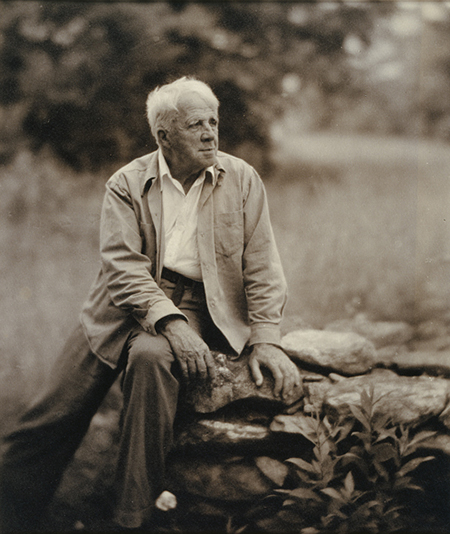Robert Frost 1874-1963
Clara Sipprell (1885-1975)
Gelatin silver print, c. 1955

National Portrait Gallery, Smithsonian Institution; bequest of Phyllis Fenner
Over his long, calculated, and prize-winning career as America’s best-loved poet, Robert Frost became the epitome of the New England Yankee: a weathered, craggy, flinty, and plainspoken countryman who turned ordinary life into poetry.
Ironies abound. He was born in San Francisco and named after Robert E. Lee. Stereotyped as a regionalist, Frost received a major boost from the rootless modernist Ezra Pound. Uniquely American, Frost’s first two books were assembled and published in England before appearing in his homeland.
Seemingly artless, because it is about artless subjects, Frost’s verse was a complicated formalist response to modernism—and to democracy. Frost did the most difficult thing: he made the complex weave of his poems appear easy or natural, leading to their persistent underestimation. Seemingly straightforward and reverential, his poems are sly, subversive. There was no less-traveled road in “The Road Not Taken”; both paths are equally unworn, and the choice is false—or more terrifyingly, meaningless.
As the years advanced, the Yankee persona won more often than not, and he tapped into a complacent, conservative populism, one that was not as benign or as avuncular as his audience sometimes assumed. Recovering that “lost past’s / detail” was Frost’s original task, one that cropped like granite through his most powerful work.
Back out of all this now too much for us, Back in a time made simple by the loss Of detail, burned, dissolved, and broken off Like graveyard marble sculpture in the weather, There is a house that is no more a house Upon a farm that is no more a farm And in a town that is no more a town.Robert Frost From “Directive,” 1947
